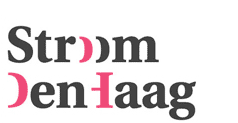Folkert de Jong 'Dutch Mechanisms', 2016
Center of The Hague: Spui - Grote Markstraat - Kalvermarkt
Part of The Sculpture Gallery
Unveiling: Friday 1 July 2016, 17.00 hrs
Preceded by debate from 15.30 hrs
with Bas Heijne, Luc Panhuysen, Marco van Baalen and Folkert de Jong
Location: Studio Dudok, Hofweg 1a, The Hague
>> read more
Bas Heijne wrote a column especially for this occasion >> read online (in Dutch)
On Friday 1 July 2016 the new sculpture Dutch Mechanisms by Folkert de Jong has been be added to The Sculpture Gallery in the center of The Hague. Starting point for the sculpture is the murder of the De Witt brothers in 1672, the outcome of a controversy about power and leadership between the republicans and the Orange royalists. It marked the end of the Republic of the Seven United Netherlands. By imagining this black page from history Folkert de Jong also draws a link to the present: battles of power and populism are of all times.
Folkert de Jong is fascinated by the way history can be traced to a collective (sub)conscious. For him the meaning of the dramatic murder of the De Witt brothers is linked directly to our present day: "Today as well, there is no morality. Political, economic and social unrest, war and power struggles have been of increasing influence on The Netherlands. Linking the morals of these days to the murder of the brothers De Witt -what do we actually know about these events? - is just as difficult as forming an opinion about the atrocities in our present time. The facts presented by the media are in effect complex and confusing. Then again, it does make sense to ponder upon one's own position. Would you be capable of condemning somebody to death or to join in a lynch mob? How far do we ourselves participate in these mechanisms of populism?
De Jong became fascinated by a finger and tongue belonging to the De Witt brothers, now located in the Hague Historical Museum. According to tradition the brothers were shot, stabbed, butchered and partly eaten in front of the Prison Gate in The Hague, before they were hung. Parts of the bodies of the murdered brothers were taken as trophies and sold, as were the finger and tongue which eventually ended up in the museum. For the sculpture the artist converted two lifelike synthetic skeletons to bronze: symbols of transience, an important theme in 17th centruy art. The skeletons seem to merge into one figure. De Jong wants to transcend the literalness of these atrocious events.
De Jong made a 3d scan and print of the finger and tongue of the brothers, and had them cast in bronze. They are the phyical link to the historical events, and represent speaking (with the tongue) and pointing (with the finger). De Jong: "It makes me suspicious that exactly these two items have survived - it is almost too good to be true. It makes me doubt their authenticity. Are they really of the brothers De Witt, or part of the myth surrounding the event? Some people see the brothers as martyrs of the ‘True Freedom', but what is the need for this martyrdom? They seem to have been killed by protagonists of the Orangists, but how can we rely on this 'knowledge' to make a proper judgment? And what is the relevance for our present time and the power structure in which we live?"
Folkert de Jong (1972, Egmond aan Zee) is well-known for his theatrical, narrative imagery that pursue themes like war, greed and power. His sculptures are often made of synthetic materials like styrofoam. Since 2012 he also works with bronze, and used it to make his first work in public space: The Player for the Koningsplein in The Hague. De Jong's work is part of the collection of the Municipal Museum The Hague, the Saatchi Collection in London and the Los Angeles County Museum of Art. At this moment Carin Goeijers is making a documentary about the work of De Jong. Folkert De Jong is one of the participants of the international exhibition SONSBEEK '16: transACTION (4 June - 18 September 2016).
The Sculpture Gallery in The Hague is a concept and design by P. Struycken. Through its permanent character and yearly commissions it offers a unique format for art in public space and offers a cross section of Dutch sculpture since 1990. Curator of The Sculpture Gallery is André Kruysen.
PRESS
Villa La Repubblica, 15 July 2016 (in Dutch)
De Posthoorn, 6 July 2016 (in Dutch)
If then is now, 4 juli 2016 (in Dutch)
Algemeen Dagblad, 2 July 2016 (in Dutch)
De Kamerbode (interne uitgave 2e kamer), July 2016
Algemeen Dagblad, 29 June 2016 (in Dutch)
De Telegraaf, 29 June 2016 (in Dutch)
Algemeen Dagblad.nl, 28 June 2016 (in Dutch)
Museumtijdschrift, 28 June 2016 (in Dutch)
Back to survey The Sculpture Gallery
- 01 Jul '16
- Contact: Vincent de Boer
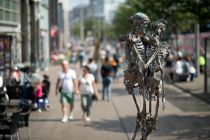
photo: Sander Foederer, courtesy Stroom Den Haag
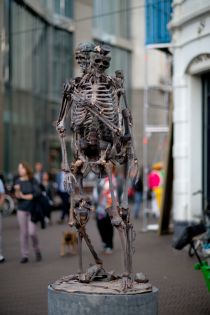
photo: © Sander Foederer, courtesy Stroom Den Haag
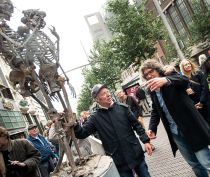
photo: © Mylène Siegers, courtesy Stroom Den Haag
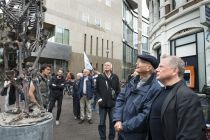
photo: © Mylène Siegers, courtesy Stroom Den Haag
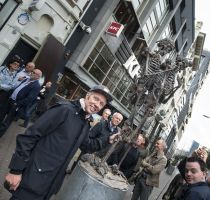
photo: © Mylène Siegers, courtesy Stroom Den Haag
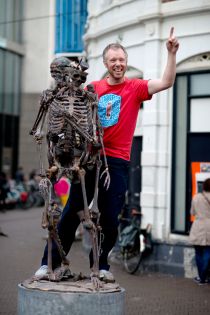
photo: © Sander Foederer, courtesy Stroom Den Haag

















